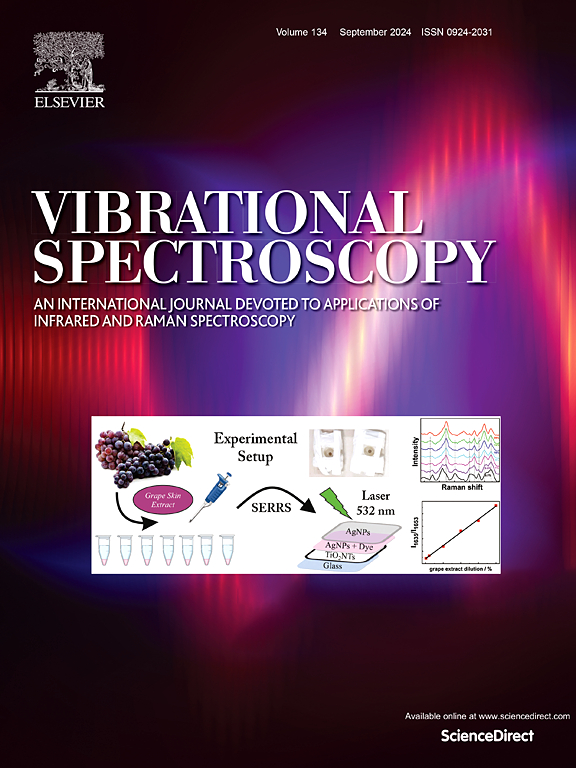基于多重共线性约简的食品原产地溯源识别变量选择方法
IF 3.1
3区 化学
Q2 CHEMISTRY, ANALYTICAL
引用次数: 0
摘要
在光谱建模分析中,光谱变量之间普遍存在多重共线性问题,这可能会降低分析结果的准确性。为了减少分类分析中变量间多重共线性的影响,提出了一种新的变量选择策略——基于多重共线性约简的变量选择策略。特征变量的选择基于类间显著性差异和类内相关性评价,减少了数据的多重共线性,保证了所选变量与类别的相关性。结合最小二乘判别分析(PLS-DA)和不相关线性判别分析(ULDA)的监督模式识别方法,对不同产地的红酒和橄榄油进行了鉴别。结果表明,与全谱模型和传统的连续投影算法(SPA)变量筛选模型相比,基于磁共振的VS策略在保证不同类别之间差异最大的同时,减少了变量之间的多重共线性,从而获得了更好的分类效果。因此,基于mr的光谱定性分析模型可以有效地提取分类特征,消除冗余信息,提高模型的可解释性,在不同领域显示出增强光谱定性分析模型能力的潜力。本文章由计算机程序翻译,如有差异,请以英文原文为准。
A variable selection method based on multicollinearity reduction for food origin traceability identification
In spectral modelling analysis, multicollinearity problems among the spectral variables are prevalent, which may reduce the accuracy of the analysis result. To reduce the effect of multicollinearity between variables in classification analysis, a new strategy of variable selection named as multicollinearity reduction-based variable selection (MR-based VS) is proposed. Characteristic variables were selected based on inter-class significant difference and intra-class correlation evaluation, which reduced data multicollinearity and ensured the selected variables were more relevant to the categories. It was combined with supervised pattern recognition methods of least squares discrimination analysis (PLS-DA) and uncorrelated linear discriminant analysis (ULDA) for the identification of the red wine and olive oil from different geographical origins. The results show that compared with the full-spectrum model and the traditional successive projection algorithm (SPA) variable screening model, the MR-based VS strategy reduces the multicollinearity between variables while ensuring the maximum difference among the different classes, as a result, it obtained the superior classification results. Therefore, MR-based VS can effectively extract categorical features, eliminate redundant information, and improve model interpretability, which shows potential for enhancing the ability of the spectral qualitative analysis model in different fields.
求助全文
通过发布文献求助,成功后即可免费获取论文全文。
去求助
来源期刊

Vibrational Spectroscopy
化学-分析化学
CiteScore
4.70
自引率
4.00%
发文量
103
审稿时长
52 days
期刊介绍:
Vibrational Spectroscopy provides a vehicle for the publication of original research that focuses on vibrational spectroscopy. This covers infrared, near-infrared and Raman spectroscopies and publishes papers dealing with developments in applications, theory, techniques and instrumentation.
The topics covered by the journal include:
Sampling techniques,
Vibrational spectroscopy coupled with separation techniques,
Instrumentation (Fourier transform, conventional and laser based),
Data manipulation,
Spectra-structure correlation and group frequencies.
The application areas covered include:
Analytical chemistry,
Bio-organic and bio-inorganic chemistry,
Organic chemistry,
Inorganic chemistry,
Catalysis,
Environmental science,
Industrial chemistry,
Materials science,
Physical chemistry,
Polymer science,
Process control,
Specialized problem solving.
 求助内容:
求助内容: 应助结果提醒方式:
应助结果提醒方式:


